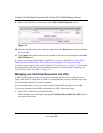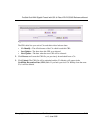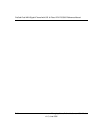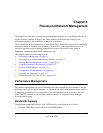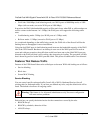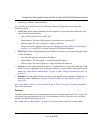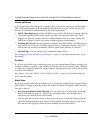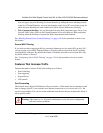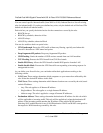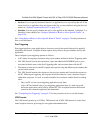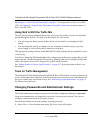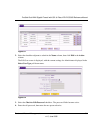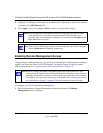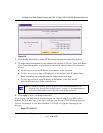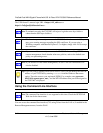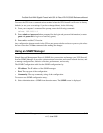
ProSafe Dual WAN Gigabit Firewall with SSL & IPsec VPN FVS336G Reference Manual
8-6 Router and Network Management
v1.2, June 2008
You can control specific inbound traffic (from WAN to LAN). Inbound Services lists all existing
rules for inbound traffic. If you have not defined any rules, only the default rule will be listed. The
default rule blocks all inbound traffic.
Each rule lets you specify the desired action for the connections covered by the rule:
•BLOCK always
• BLOCK by schedule, otherwise Allow
• ALLOW always
• ALLOW by schedule, otherwise Block
You can also enable a check on special rules:
• VPN Passthrough. Passes the VPN traffic without any filtering, specially used when this
firewall is between two VPN tunnel end points.
• Drop fragmented IP packets. Drops any fragmented IP packets.
• UDP Flooding. Limits the number of UDP sessions created from one LAN machine.
• TCP Flooding. Protects the VPN firewall from SYN flood attack.
• Enable DNS Proxy. Allows the VPN firewall to handle DNS queries from the LAN.
• Enable Stealth Mode. Prevents the VPN firewall from responding to incoming requests for
unsupported services.
As you define your firewall rules, you can further refine their application according to the
following criteria:
• LAN Users. These settings determine which computers on your network are affected by this
rule. Select the desired IP Address in this field.
• WAN Users. These settings determine which Internet locations are covered by the rule, based
on their IP address.
– Any: The rule applies to all Internet IP address.
– Single address: The rule applies to a single Internet IP address.
– Address range: The rule is applied to a range of Internet IP addresses.
• Destination Address. These settings determine the destination IP address for this rule which
will be applicable to incoming traffic This rule will be applied only when the destination IP
address of the incoming packet matches the IP address of the selected WAN interface
Selecting ANY enables the rule for any LAN IP destination. WAN1 and WAN2 corresponds to
the respective WAN interface governed by this rule.



